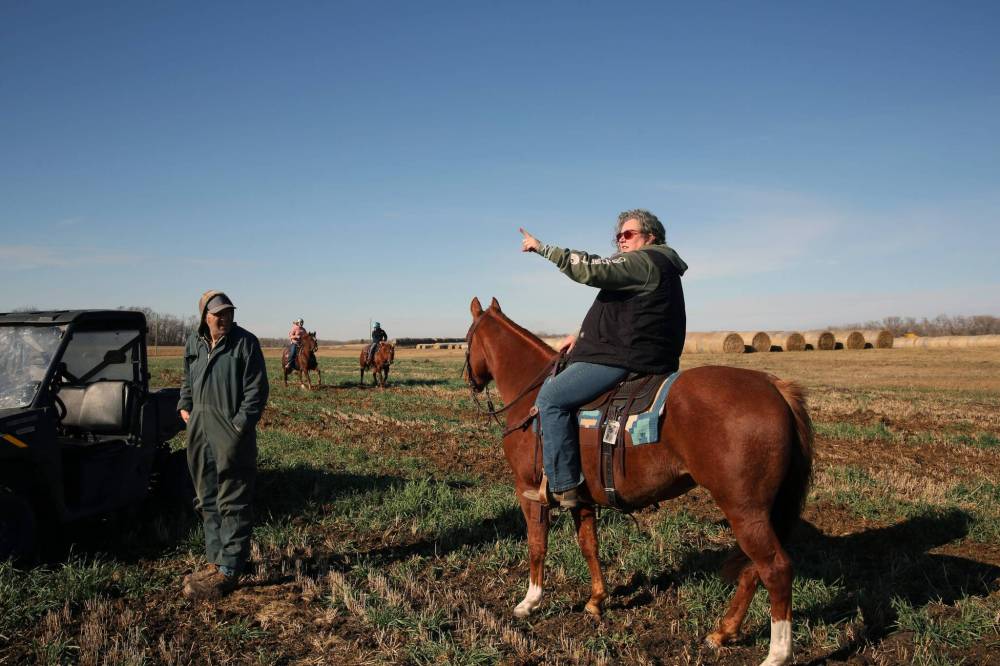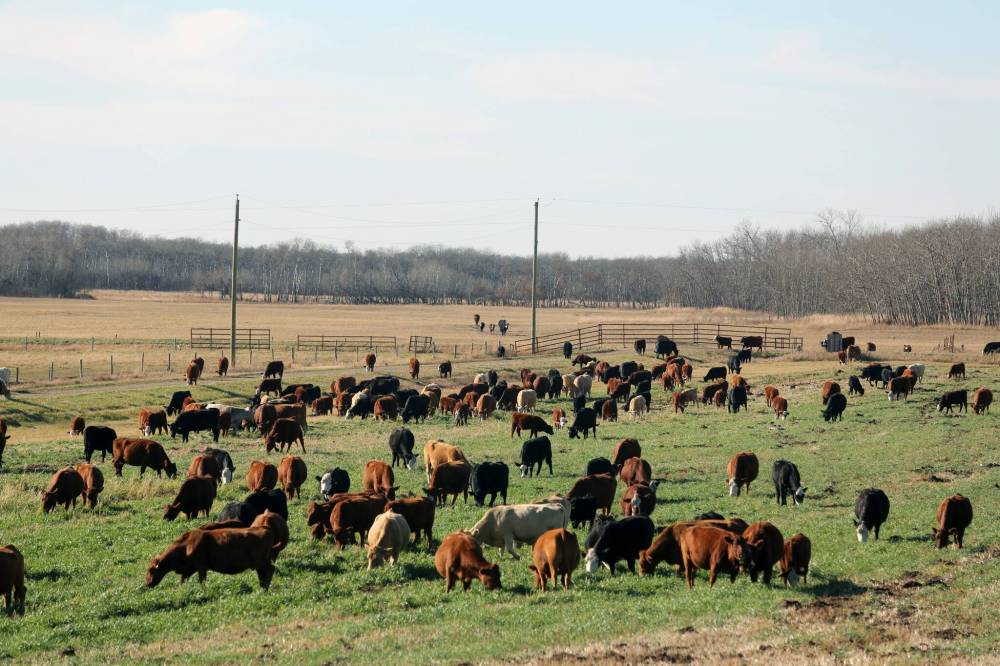Dry year brings stress for ranchers
Advertisement
Read this article for free:
or
Already have an account? Log in here »
We need your support!
Local journalism needs your support!
As we navigate through unprecedented times, our journalists are working harder than ever to bring you the latest local updates to keep you safe and informed.
Now, more than ever, we need your support.
Starting at $15.99 plus taxes every four weeks you can access your Brandon Sun online and full access to all content as it appears on our website.
Subscribe Nowor call circulation directly at (204) 727-0527.
Your pledge helps to ensure we provide the news that matters most to your community!
To continue reading, please subscribe:
Add Brandon Sun access to your Free Press subscription for only an additional
$1 for the first 4 weeks*
*Your next subscription payment will increase by $1.00 and you will be charged $20.00 plus GST for four weeks. After four weeks, your payment will increase to $24.00 plus GST every four weeks.
Read unlimited articles for free today:
or
Already have an account? Log in here »
Cattle producers are adjusting to a dry season this year in a few ways as farmers across Manitoba are impacted by below-average rainfall, the president of the provincial beef producers association and a local farmer said.
As many areas in Westman are working with roughly half of normal rain numbers so far compared to the average, crop farmers are not the only ones suffering. The conditions are set to have an impact on the cattle market, by impacting the price of cow feed and driving up the cost of raising the animals.
Matthew Atkinson, president of Manitoba Beef Producers, told the Sun in an August interview that a lot of areas have seen a poor crop production year. While there have been some food reserves carried over from last year, the impacts are expected to be seen in the cattle market.

Curtis Gerow is seen last year on his family cattle farm near Souris, along with his partner Pamela How. Gerow is one of many cattle farmers in Manitoba adjusting to a dry year that will see the market impacted by rising costs of feed. (Connor McDowell/Brandon Sun)
“It’s a big supply-and-demand industry,” said Atkinson. “And so anytime we’re short on feed, those prices increase, and increase significantly.”
The pressure this puts on the cattle market can manifest in a few ways, he said. In some cases, producers may look to sell off some cows. Other farmers have purchased feed ahead of the curve, early in the year before prices were expected to rise. On the business side, some auction marts adjusted by moving up their fall auction sales.
“That gives producers an opportunity to market some calves a little bit earlier, or even make some culling decisions on some less-productive cattle through their cow herd … and have a lot less mouths to feed if they’re going to be bringing (rations) in to feed those cattle.”
Those who are not forced to sell often find creative solutions, as with one farmer near Souris.
Curtis Gerow, a cattle and crop farmer out of Souris, tells the Sun he will adjust by selling less crop on the market this year. He expects he will dedicate 50 per cent more of his crop land toward food for his herd.
It means less crop sales for the family farm, but that is a small price to pay for the insulation that this gives. He said he had been planning his farm to work like this in dry years for more than 10 years.
“I’ve done the opposite of everyone else,” Gerow said. “I’ve got a lot of land, that, when it’s wet, there’s no crop.”
Gerow explained that he strategically acquired wet land to hedge against years like this year. The balance on the land is right during dry spells, and the yield is very productive, giving him food when the markets are bad.

A herd of cattle grazes on the front lawn at Gerow Farms after knocking through the pasture gate in 2024. Curtis Gerow is planning to adjust to a dry year by converting more of his crop into livestock feed. (Connor McDowell/Brandon Sun)
“When a dry year comes along, I have tons and tons of hay, and nobody else has hay, and hay is expensive.”
Not everybody has 15 years worth of such planning built into their operation, however. Gerow said the dry year is beginning to weigh on farmers he has spoken with, who are in a tougher position looking at expensive feed costs coming up.
“I know a lot of guys are considering to just sell calves earlier than usual, just to kind-of cushion themselves.”
Reacting to the dry year, the Province of Manitoba announced in late July a program to provide relief to livestock farmers. The program makes it easier for farmers to convert drought-stricken crops into livestock feed. As a result, the program opens up more possible feed for livestock in the province and serves to fight back against shortages.
“That’s something that we’re incredibly thankful for,” Atkinson said. “It is really, really valuable to have that option. I don’t want to see crops go to waste. I want to see them go into feeding cattle – that feed people just the same.”
When the program was last used during the 2021 drought, more than 100,000 acres of grain crops were converted into livestock feed, the province reported. The cereal crops included in the program this year are wheat, oats, barley, fall rye, triticale and grain corn.
Keystone Agriculture Producers (KAP) president Jill Verwey told the Sun that timing is crucial for the program, and that there’s a chance the announcement may have come a little late for some areas of the province. The crops need to still be green-ish when they are converted to livestock feed, and due to the variability across Manitoba of when farmers plant crops, some people likely had lost the green of their crops before the announcement was made on July 23.
Verwey said it’s difficult to time the program right because there’s a broad diversity of farmers in Manitoba who seed crops at different times.

In July, Manitoba Agriculture Minister Ron Kostyshyn announced a program to support livestock farmers due to dry conditions this year. Kostyshyn is pictured here during Manitoba Ag Days 2024 at the Keystone Centre. (Tim Smith/The Brandon Sun files)
KAP will look at enrolment numbers once they come in later in the year, she said. The group can then look for ways to improve support for livestock farmers, once it’s clear how many people opted into the program, she said.
Comparing today’s dry conditions to the drought of 2021, Atkinson and Verwey said conditions were more severe back then. A string of drought years had piled up, compared to last year, when Atkinson said many farmers had great production and stockpiled feed that they plan to carry over to this year. That won’t be the case with everyone in the province, Verwey said, but conditions are better now.
For Atkinson, who farms near Neepawa, the cattle farming game can be stressful because of the uncertainty.
“None of us have a crystal ball to know what’s going to happen. We have lots of predictors on markets and historical data, but ultimately, we’re all trying our best.”
» cmcdowell@brandonsun.com
